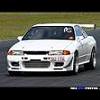Front Upper Arms For Ecr33...
Announcements
-
Similar Content
-
Latest Posts
-
Ok awesome! I’m not running a aac/iacv (although I do have the r34 iacv but I’m running the heater core loop. I’m running the chase bays booster delete so In that case would I need to block off those posts? So at the moment I need to run from one of the posts to the fpr and then a separate post to the boost controller then to the wastegate? Also I’m assuming that each port has a specific use like the first one farthest to the left would be (for example) manifold to fpr and then second would be to boost controller?
-
I was just going through this on Neil's car (33 gtst). Assuming you are using standard AAC and Cold start valves, you need Post Turbo Pre throttle to Boost Controller (if you have one) then to Turbo Wastegate Pre throttle to AAC input AAC input T piece to Cold start input Cold start output to plenum post throttle AAC Output to plenum post throttle AAC Output to brake booster (needs a 1 way valve) Plenum post throttle to Fuel Pressure Regulator Plenum post throttle to Blow off valve signal Plenum post throttle to Boost controller input (if you have one)
-
I’m trying to figure out the purpose of these fittings. Assuming they’re for coolant but not sure where the lead to. I know the bigger one on the right (which isn’t filled) is the brake booster. If anyone has a photo of a diagram of this intake or has a set of instructions it’d be greatly appreciated
-
Ahhh! My silly brain was thinking Nissan started selling them straight away, but they waited w or three years didn't they? Maybe Duncan should build an R35 race car over the V37... There's a cheap yellow one on car sales Duncan, would only need your splash of purple added...
-






Recommended Posts
Create an account or sign in to comment
You need to be a member in order to leave a comment
Create an account
Sign up for a new account in our community. It's easy!
Register a new accountSign in
Already have an account? Sign in here.
Sign In Now